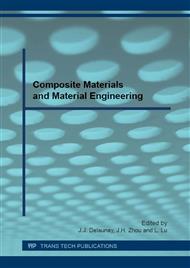p.125
p.135
p.140
p.144
p.148
p.152
p.156
p.160
p.166
The Effect of Mixing Ratios on Pore Properties of Fe Foam Fabricated Using Slurry Coating Process
Abstract:
Metal foams have a cellular structure consisting of a solid metal containing a large volume fraction of pores. In particular, open, penetrable pores are necessary for industrial applications such as in high temperature filters and as support for catalysts. In this study, Fe foam with greater than 90% porosity, 2-mm pore size was successfully fabricated using a slurry coating process and the pore properties were characterized. The Fe and Fe2O3 powder mixing ratios were controlled to produce Fe foam samples with different pore sizes and porosity. First, the slurry was prepared through the uniform mixing of powders, distilled water, and polyvinyl alcohol (PVA). The amount of slurry coated on the PU foam increased with theFe2O3 mixing powder ratio, but the shrinkage and porosity of the Fe foams decreased, respectively, with increasing Fe2O3 mixing powder ratio.
Info:
Periodical:
Pages:
166-169
Citation:
Online since:
July 2016
Authors:
Keywords:
Price:
Сopyright:
© 2016 Trans Tech Publications Ltd. All Rights Reserved
Share:
Citation:


